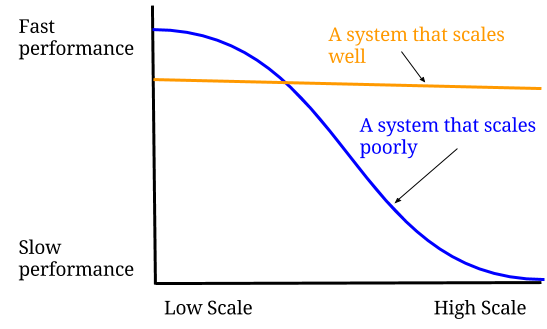
The compute needs of actuaries have only increased over time, and more traditional solutions like on-premise grids are beginning to fall short. High Performance Computing (HPC) offers a scalable solution to overcome these challenges, providing actuaries with the processing power necessary to meet tight deadlines and navigate increasingly complex regulatory environments.
In this primer, we’ll explore the fundamentals of HPC, its role in the actuarial field, and why actuaries should consider adopting HPC in their workflows.
What is High Performance Computing (HPC)?
High Performance Computing is the ability to process data at a significantly higher speed than traditional computing systems.
HPC is achieved by distributing a workload across clusters of computers that work in parallel to process large amounts of data at high speeds. These are often hundreds or thousands of networked servers typically referred to as “nodes”, each of them containing multiple processors that work in synchrony. An HPC system will break down complex problems into smaller tasks that can be processed independently and distribute these tasks across its nodes. Each node can work on its assigned task simultaneously and combine its results with other nodes, producing a final output.
For actuaries, this means being able to run multiple simulations, scenarios, and stochastic models simultaneously, often in a fraction of the time it would take on a traditional computer.
Key components of an HPC architecture
To understand how HPC works, it’s essential to break down its core components. There are three key elements in any HPC setup:
Nodes: These are the servers or computers that do the heavy lifting. In an HPC environment, multiple servers are interconnected working together in a “cluster” to distribute and process data simultaneously.
Network: This is the communication layer that allows the different computers to share information. It’s vital for ensuring that the distributed system runs smoothly and efficiently.
Storage: A shared storage system is necessary so that all computers in the network can access the same data and save their results.
How does it differ from regular or cloud computing?
The key difference between grid computing and HPC is performance vs. scalability and parallelization. Performance is the capability of a particular component to provide a certain amount of throughput. Scalability, in contrast, is about the ability of a system to expand to meet demand.
In this sense, grids are typically more resource-efficient than HPC – the finite compute of grids means they must utilize every resource to its fullest potential in order to get an answer quickly. HPC grids are more focused on scalability and parallelization, which means that while an individual resource might not be utilized 100%, this is less of a concern if it can scale up more resources to answer the question faster.

How HPC benefits actuarial teams
Actuarial teams are under constant pressure to deliver accurate models and forecasts quickly, especially in the face of complex insurance products and stringent regulatory requirements. With runtime reductions of up to 90%, HPC can significantly improve a team’s performance across a variety of essential metrics:
Speed to insight: HPC can reduce processing times from days or hours to minutes, allowing actuaries to iterate faster and complete more comprehensive analyses.
Increased capacity: With the ability to handle large datasets and complex models, HPC allows actuarial teams to work on problems that were previously too resource-intensive.
Quality of results: The ability to run more scenarios and sensitivities in less time improves the quality of the insights actuaries can deliver.
One of the most significant advantages of HPC is its scalability. On-premise systems are limited by available hardware, and adding more computing power often means expensive investments in new servers, infrastructure, management, and maintenance. Cloud-based HPC, however, offers virtually unlimited compute power that can be scaled up or down on demand.
Slope Software’s cloud-native High Performance Mode allows actuaries to run large models without worrying about server capacity, and its clients have seen significant performance gains. Funeral Directors Life, a SLOPE client, had already reduced its 2 week runs to 4 hours by switching to SLOPE and cut its runtimes in half again by utilizing High Performance Mode.
Types of HPC solutions for actuarial modeling
When implementing HPC, actuarial teams can choose between several different solutions, depending on their needs and resources:
On-Premise HPC
On-premise HPC is technically possible for an actuarial team, but it involves setting up high-performance servers within the company’s own infrastructure. This solution offers full control over the hardware and software, but comes with significant upfront costs, maintenance requirements, and scalability limitations.
Cloud-Based HPC
Cloud-based HPC provides a flexible, scalable solution that leverages the power of cloud computing. Cloud providers like Amazon Web Services (AWS), Google Cloud, and Microsoft Azure offer HPC resources that can be scaled on demand, eliminating the need for significant hardware investments. This solution is ideal for actuarial teams that require flexibility and want to avoid the operational burden of maintaining on-premise infrastructure.
Final Thoughts
High-Performance Computing is transforming the way actuaries work. By leveraging distributed computing power, HPC allows teams to process more data, run more complex models, and get results faster than ever before. As the demand for speed and accuracy in actuarial work continues to grow, HPC is poised to become an indispensable tool for the modern actuary.
Learn More
Co-Founder and CTO Taylor Perkins shares his thoughts on how HPC can benefit actuaries.

